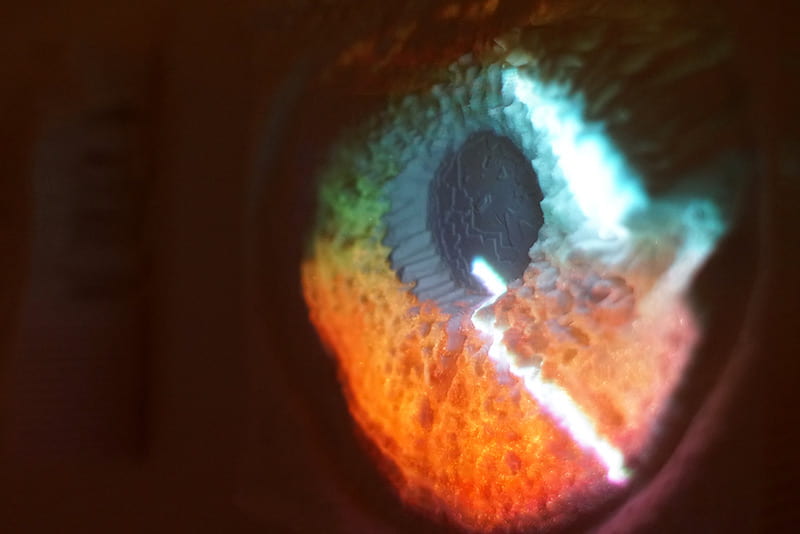“Eyes” Wide Open

JSU Assistant Professor of Design Yoon Chung Han’s piece, “Eyes,” which is created using biometric data. Photo courtesy of Yoon Chung Han.
Inside a darkened gallery, patrons are invited to step up to a machine where they can scan their eyes and watch as software projects a three-dimensional image of their iris on the wall, pairing it with a sound that corresponds to the colors in their eyes. The installation, called “Eyes,” was first designed by SJSU Assistant Professor of Graphic Design Yoon Chung Han in 2018 as the second in a series she created to explore the use of biometric data in art, engineering and design.
“Biometric data—data collected from our fingerprints, our eyes, our faces, our gazes and even our gaits—are used everywhere,” says Han, who was inspired to explore these ideas after arriving in the U.S. as an international student from Korea. She noticed how the American government collected her biological data to verify her identity. As a PhD student at UC Santa Barbara, she began explore how to engineer and design installations that could create artwork using unique biometric data. “I was curious—what are the meaning of these media technologies? Are they really to represent ourselves and our identities? How could I make more personalized art? When you input your biometric data, you create a closer relationship between you and the art itself.”
Her first piece, “Digiti Sonus,” involved a sensor where people could place their fingerprints. Han coded the software such that the machine would scan each unique print, map out a three-dimensional image of the print’s “valleys and mountains,” and associate each piece with a special sonic signature. “Eyes” takes a similar approach, using software to parse each iris for its individual color makeup, associate each color with a sound, and create a rotating three-dimensional image for people to observe. Han says that some participants have used the color palettes established by the installation to find flattering clothes or brainstorm indoor decorating. For her, though, the questions loom larger than color matching.
“The idea is to allow the audience to explore their own identities through unique visual and sound generated by their iris patterns based on iris recognition and image processing techniques, writes Han in her artist statement. “The audience members can compare their iris-based sonic results with others, and question the ‘problem of disembodied identities’ in the digital era through the existence of audiovisual representation of individuals.”
Han is already at work on her third piece in this series, which will involve scanning the veins in human forearms. Visit her artist website to learn more about her work.




